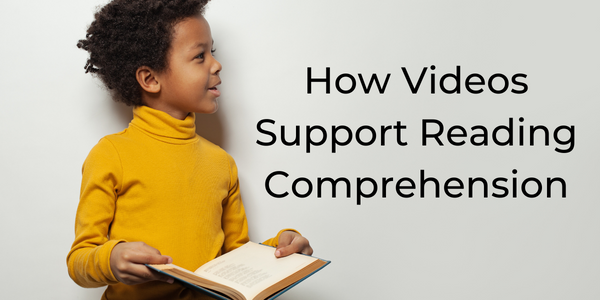
The American Pediatrics Association reports that reading when young – even infants being read to by their parents – stimulates brain development that builds language, literacy, and a child’s motivation to learn. In addition, student literacy builds self-esteem, improved concentration, critical and analytical skills, stronger memory, and expanded vocabulary.
There is only reading when you have comprehension. Reading comprehension occurs when words are not just words but thoughts and ideas. It involves many processes, such as understanding the text, imagining what the words describe, and answering questions related to a text.
To move beyond reading to comprehending text, students need to become proficient in the following foundational reading comprehension skills. They include using prior knowledge, making predictions, identifying the main idea, ability to summarize, questioning, ability to visualize, and making inferences. These comprehension skills ensure students can identify the text’s central idea and translate the meaning of the written text.
Making Inferences
However, as they move from learning to read to reading to learn, students must become adept at the high-level reading comprehension skill of making inferences. Often referred to as ‘between the lines’ or ‘think and search’ comprehension, students draw on their prior knowledge of a topic and identify relevant text clues such as words, images, and sounds to make an inference. In addition, when students read inferentially, they read more strategically by deducing what is not said or implied in a text by drawing on their knowledge of the world and past experiences.
Inference and Video
While most models aim to teach inference with text, students learn best when taking in information via multiple modalities. One powerful modality is video. When classroom teachers introduce videos as a strategy, students practice making inferences without worrying about the mechanics of reading. Videos engage students of all ages and abilities, motivate them with authentic content and provide context to help them understand the text. As an inference strategy, linking words, phrases, clauses, and sentences in the videos connect students to content such as text-based reading passages.
Also, through videos, students develop skills to find clues, add those clues to what they already know or have read, understand that there can be more than one correct answer, and develop skills to support inferences with evidence. In addition, videos offer more engaging sensory experiences where students see and hear the concept taught.
Videos in Action
If a student can make inferences with videos, they can make words. For example, in elementary grades, using an animated video such as Oktapodi helps students practice making inferences without worrying about the rules of written language.
In addition, introducing a story using video and discussion can be followed by students reading the story and completing writing activities. Pixar’s For the Birds is an excellent example of a short, animated film that suits this learning outcome. Students must interpret what might happen and why and build inference skills that will transfer to written content.
Whether reading fiction or nonfiction, students benefit from contextualizing the person, place, or thing they are learning. Video clips can assist students in reading and visualizing an event or a person while setting the context historically, politically, socially, and emotionally. For example, in upper grades, short clips of scenes from Macbeth and Hamlet can model the text for further discussion and critical analysis.
Technology as a Game Changer
Teaching students to read inferentially can be challenging for both the teacher and the student as it fundamentally changes how students think while reading. However, the increasing use of technology in instructional practices expands the possibilities of video for critical reading comprehension skills. When we expose students to video lessons that reinforce and support inferential comprehension skills, such as concluding using reasoning and evidence, they have better reading comprehension skills than traditional teaching methods. Exposure to more technology-based instructional materials such as videos and varied teaching approaches and strategies can only improve students’ reading comprehension skills essential to developing young minds, activating imagination, and promoting a curiosity for discovery.
Understanding the impact that videos in class instruction have on reading comprehension, MyVRSpot can provide districts with a robust platform to manage your school district’s ever-expanding video and digital media needs.

